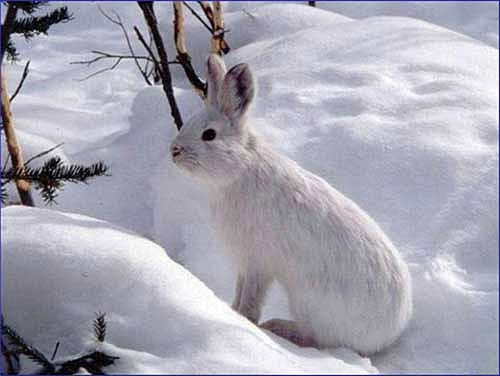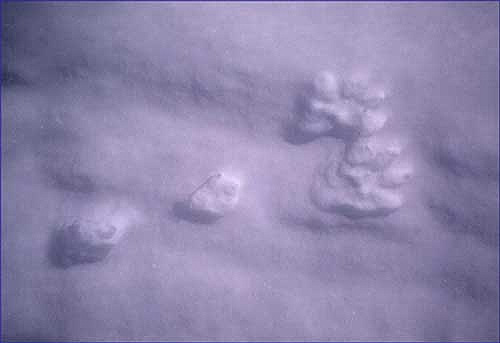 By NED ROZELL October 31, 2008
"Jack told me that, in some areas, when hares are at their peak, they go to certain mineral licks and eat the soil," DiFolco said. "He also noticed that lynx appeared to be really skinny when there were tons and tons of hares to eat, and (the lynx's) flesh was an unusually dark, purplish color."  Photo courtesy of Donna DiFolco
Though your mother told you that eating dirt was icky, many people and animals seem to disagree. Geophagy is a word meaning "to eat earth," and pregnant women in Africa do it, as do antelopes, apes, giraffes, zebras, monkeys, deer, cows, pigs, butterflies, and snowshoe hares north of the Arctic Circle. In an article he wrote for Discover magazine in 1998, bestselling author and biologist Jared Diamond described how parrots were attracted to a recent landslide in a remote mountain range in New Guinea. Diamond and his colleagues puzzled over why so many birds were visiting the fresh soil. He didn't give up on the mystery, finding years later that the parrots were eating dirt that contained minerals that counteracted toxins in fruits. "Somehow, parrots have made themselves relatively immune to plant poisons and bad tastes," Diamond wrote. "They specialize in eating seeds and unripe fruits, despite high concentrations of alkaloids and other toxins that would be awful-tasting or fatal to humans." Parrots, "one of the most
successful groups of birds," with 350 species worldwide,
can detoxify plant poisons by using minerals in eaten soils that
bind with the bad stuff and allow the birds to get nutritional
value from marginal food, Diamond concluded.  Photo courtesy of Donna DiFolco And so it may be with snowshoe hares up north, DiFolco said. During peaks of the snowshoe hare cycle, when they are desperately nibbling every willow, balsam poplar, spruce, alder, and birch shrub they can reach, plants react to this attack by producing compounds that make their stems bitter at best, fatal at worst. You can see a young birch tree's apparent reaction to herbivores in the tiny beads that cling like salt crystals to a tree's lower stems. Perhaps the hares that are eating soil near cutbanks on some arctic rivers are ingesting something that lets them eat more vegetation that is inedible to other hares, DiFolco said. "Maybe they're going to the banks to medicate themselves," she said. "Maybe they just want salt, but they might be getting sort of an antidote to anti-herbivory compounds." Hares in the areas of exposed soils seem to maintain their population peaks longer than hares without access to minerals, DiFolco said. But there appears to be a price. "Those hares can be pretty lethargic," DiFolco said. "You can practically walk up to them." And then there's the issue of the lynx with the discolored flesh that Reakoff has captured. The deep purple of their flesh is different than a healthy lynx that has flesh that looks more like pork. Lynx in her study areas outside the exposed soil areas all appear to be healthy, with normal flesh color, DiFolco said. DiFolco hopes to find out more
about the mystery in the near future, when she'll analyze soil
samples for the presence of heavy metals, and hopefully get some
flesh samples of both hare and lynx from trappers. Maybe then
she'll find if the hares are using the banks of northern rivers
as a hop-in drug store.
University of Alaska Fairbanks, in cooperation with the UAF research community. Ned Rozell [nrozell@gi.alaska.edu] is a science writer at the institute. Publish A Letter in SitNews Read Letters/Opinions
|